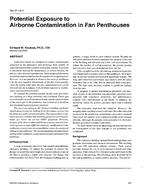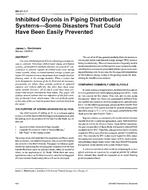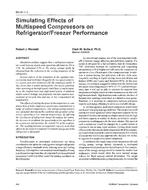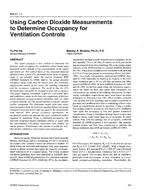-
-
Available Formats
- Options
- Availability
- Priced From ( in USD )
-
Available Formats
-
- Immediate download
-
$16.00Members pay $7.00
- Add to Cart
Customers Who Bought This Also Bought
-

BN-97-14-4 -- Potential Exposure to Airborne Contaminatio...
Priced From $16.00 -

BN-97-03-2 -- Inhibited Glycols in Piping Distribution Sy...
Priced From $16.00 -

BN-97-07-3 -- Simulating Effects of Multispeed Compressor...
Priced From $16.00 -

BN-97-08-1 -- Simulation of a Single Vertical U-tube Grou...
Priced From $16.00
About This Item
Full Description
Proposes a new method to determine the dynamic zonal occupancy for ventilation control based upon measured carbon dioxide (CO2) concentrations in the supply and return air. The central thesis of the proposed transient method is that a fixed CO2 threshold based upon occupancy alone is not possible under current proposed BSR/ASHRAE Standard 62-1989R. Rather, the actual dynamic occupancy head count must be known since the ventilation requirements consist of two parts-the building component and the occupancy component. The result is that the CO2 threshold must constantly be changed in time with occupancy. Employs simulation results for well-mixed office and conference rooms as the basis for comparison of the proposed transient occupancy-based ventilation with two other accepted methods: the CO2-based ventilation and the constant air flow ventilation. The simulation results show that calculated occupancy from the transient equation follows the actual occupancy precisely with a time lag equal to the measurement scan interval. With precise occupancy information, the mechanical system can provide the extract ventilation air flow required by standards. From a ventilation perspective, the transient occupancy-based ventilation-and without an energy penalty. Furthermore, this scheme is useful for real-time on-line ventilation control and system optimisation.
Units: Dual
KEYWORDS: year 1997, Carbon dioxide, measuring, ventilation, controls, occupancy, offices, conference spaces, comparing, demand controlled ventilation





